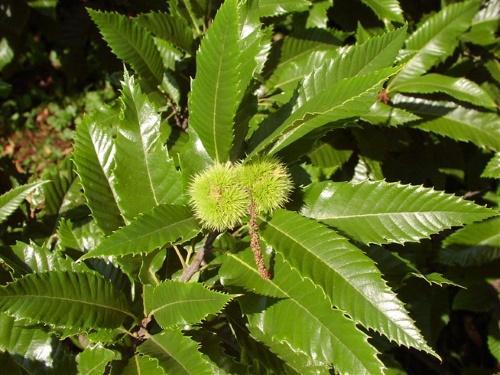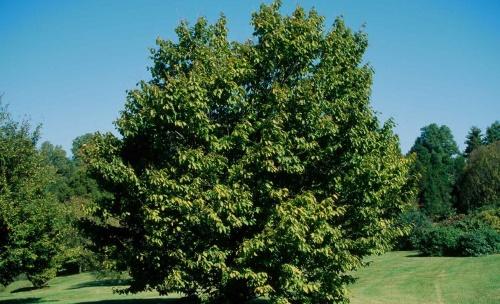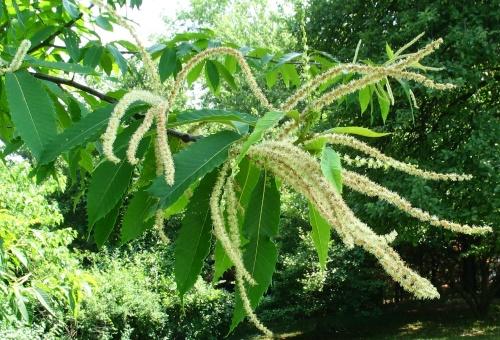Toothed chestnut - edible, beautiful and unpretentious culture
 If the horse chestnut can be found in every square and park and even among private houses, then the toothed chestnut is not so popular. And it is completely in vain, because this plant is in many ways superior to its relative. The tree grows quickly, has increased winter hardiness, and its fruits can also be eaten. They are delicious, juicy and sweet. Chestnut does not impose special requirements and grows well even in urban conditions with polluted air.
If the horse chestnut can be found in every square and park and even among private houses, then the toothed chestnut is not so popular. And it is completely in vain, because this plant is in many ways superior to its relative. The tree grows quickly, has increased winter hardiness, and its fruits can also be eaten. They are delicious, juicy and sweet. Chestnut does not impose special requirements and grows well even in urban conditions with polluted air.
The toothed chestnut is also known as the noble or American. And for the fact that its fruits have long been eaten, the chestnut is called simply edible or "bread tree".
Characteristic features of culture

Find out edible chestnut or horse in front of you, you can already in appearance. These cultures are different from each other:
- Leaves. In the first, they are larger, with a jagged edge and grow "each by itself", while in the horse they are arranged in bunches. The noble chestnut also sheds its foliage in autumn, but before that it turns into a sunny yellow color.
- Blooming. Unlike the strict white "candles" of the horse chestnut, the edible in spring is decorated with hanging bunches of fluffy earrings.
- The fruits. The nuts themselves are the same, brown with a glossy sheen. But the shell of the edible chestnut is absolutely inaccessible thanks to the many thorny thorns. The chestnuts growing in our parks have rare thorns.
 Fruits of toothed chestnut can be fried, chopped and made into flour, added to sauces, salads, desserts.
Fruits of toothed chestnut can be fried, chopped and made into flour, added to sauces, salads, desserts.
Toothed chestnut: growing technology
 If you decide to get an edible chestnut tree, heed the advice of experienced gardeners and never buy imported seedlings. First of all, they rarely take root. In addition, there is a risk of getting in the appendage the "chestnut scourge" widespread in America - a severe and contagious fungal disease.
If you decide to get an edible chestnut tree, heed the advice of experienced gardeners and never buy imported seedlings. First of all, they rarely take root. In addition, there is a risk of getting in the appendage the "chestnut scourge" widespread in America - a severe and contagious fungal disease.
The best option is to find fruits and plant them. Plants obtained from seeds grow stronger and more resistant than imported seedlings. However, they must be fresh, because after 4 months the chestnut loses its germination.
Due to its high winter hardiness, the tree can grow even in the central zone and to the north. It is able to withstand frosts down to minus 35 °, shade-tolerant, can be shaped. The soil is not particularly demanding, the main thing is that there is not a lot of lime in it. To get a harvest, it is enough to have only one specimen, because the chestnut has both male and female flowers.